FiiO SP3 BT High Fidelity Active Desktop Speakers – Grandiose Dreams Of A Smooth Talker
FiiO SP3 BT is a $349 USD pair of Hifi Speakers made for desktop nearfield monitoring, with 80W of Power, a 3.5″ Carbon Fibre Midrange driver and an 1″ Silk Tweeter. Today we will review the SP3 BT and compare them to other speakers and audio solutions that we have reviewed, including Tronsmart Bang Max (229 USD), SVS Prime Wireless PRO (899 USD), and Aurender S5W (3000 USD)

Introduction
FiiO is known for making some of the best sounding products in every range out there, but the SP3 Bluetooth we’re reviewing today is unique among FiiO products, being the first Speaker they created, and the one that will show whether FiiO can create sound for a big room, coming from a really small speaker. Those are some of the better looking solutions for someone with a small desk space, and someone who wants to paint a colourful sound in their space, so together we will see where they stand in the audio world. As an Amazon Influencer, I earn from qualifying purchases, and using the purchase links in my reviews helps me maintain this website and Youtube Channel. FiiO provided the sample for this review, in exchange for my honest opinion.
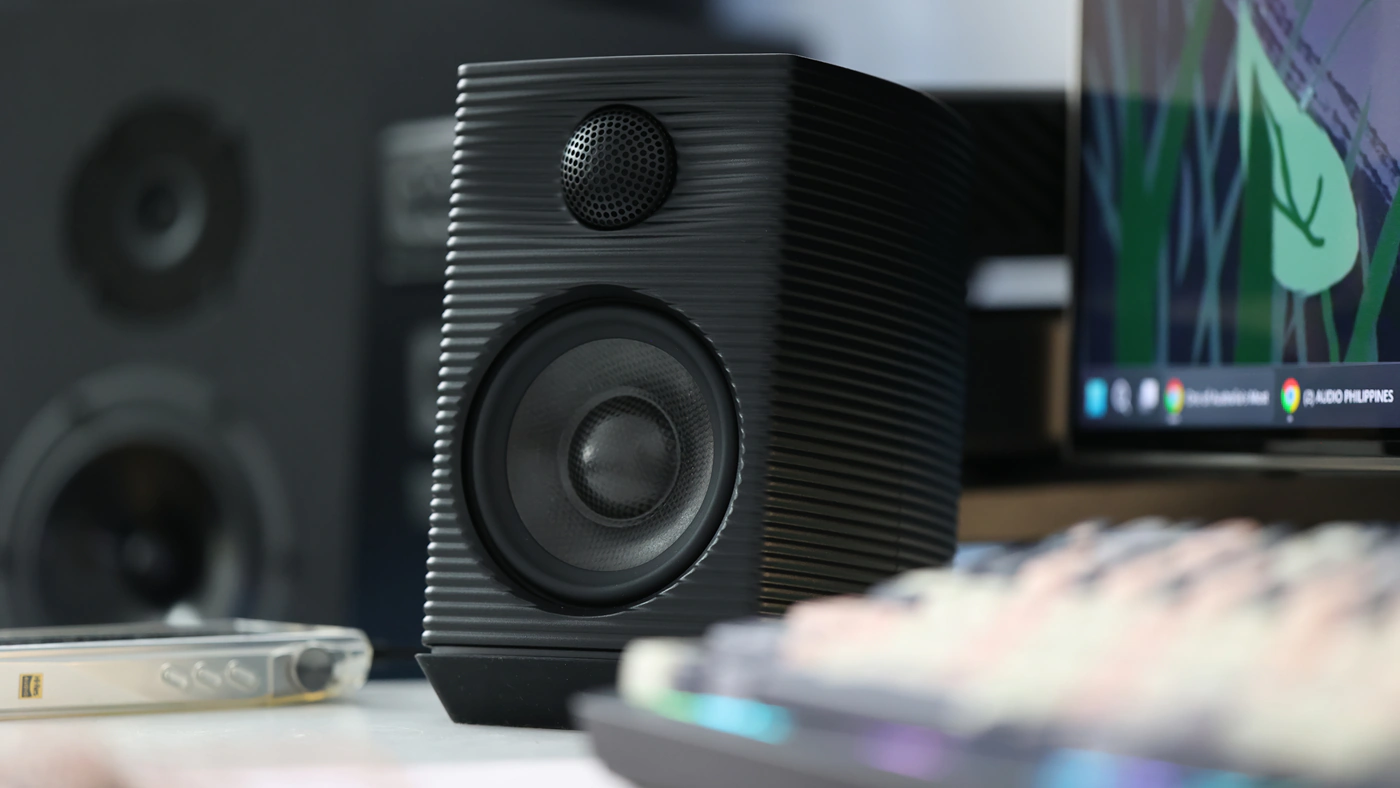
PROs – Excellent resolution and detail, natural midrange that always brings voices close to you and makes the lyrics easy to understand, strong stereo imaging, and low distortion. SP3 BT has almost the same sound from every input, having a strong control, plus a wide soundstage, holographic presentation and punchy, dynamic sound. Maximum loudness is extremely high, and the USB DAC function is flawless with no DAC delay, while every other input is crisp and distortion-free. Even at very loud volumes and continuous usage, the AMP inside doesn’t get warm, and the drivers are sturdy, well protected, with a strong aluminium case.
Cons – Bass Roll-Off below 70 Hz, and sound gets aggressive at very loud volumes. Strong directionality, meaning you have to sit in between the speakers and at a deviation of maximum 15 degrees for best sonic performance.
Product Link
You can grab one here – https://amzn.to/46D7xvC
Build Quality / Aesthetics
I cannot emphasise enough how good the build quality of the SP3 BT really is, as this is a speaker made of metal, with superb design, and really cool looking drivers. The speaker cabinet is made of metal, die-cast aluminium to be more precise, and the horizontal stripes you see all across the speaker are cleverly designed to keep the structural integrity whole even at very low volumes. We do know that the drivers are 3.5″ in size for the mid woofer, and 1″ in size for the tweeter. The cabinets have a diminutive 2.35liters volume, which is so low, that I can keep them in front of my TV without hindering my view of my monitor. SP3 is tiny, portable, ergonomic and convenient to use on a daily basis. Aluminium is actually excellent to make a speaker out of, as it naturally has low resonance and self noise, but it is too heavy and pricey for building larger speakers, like floorstanding models.
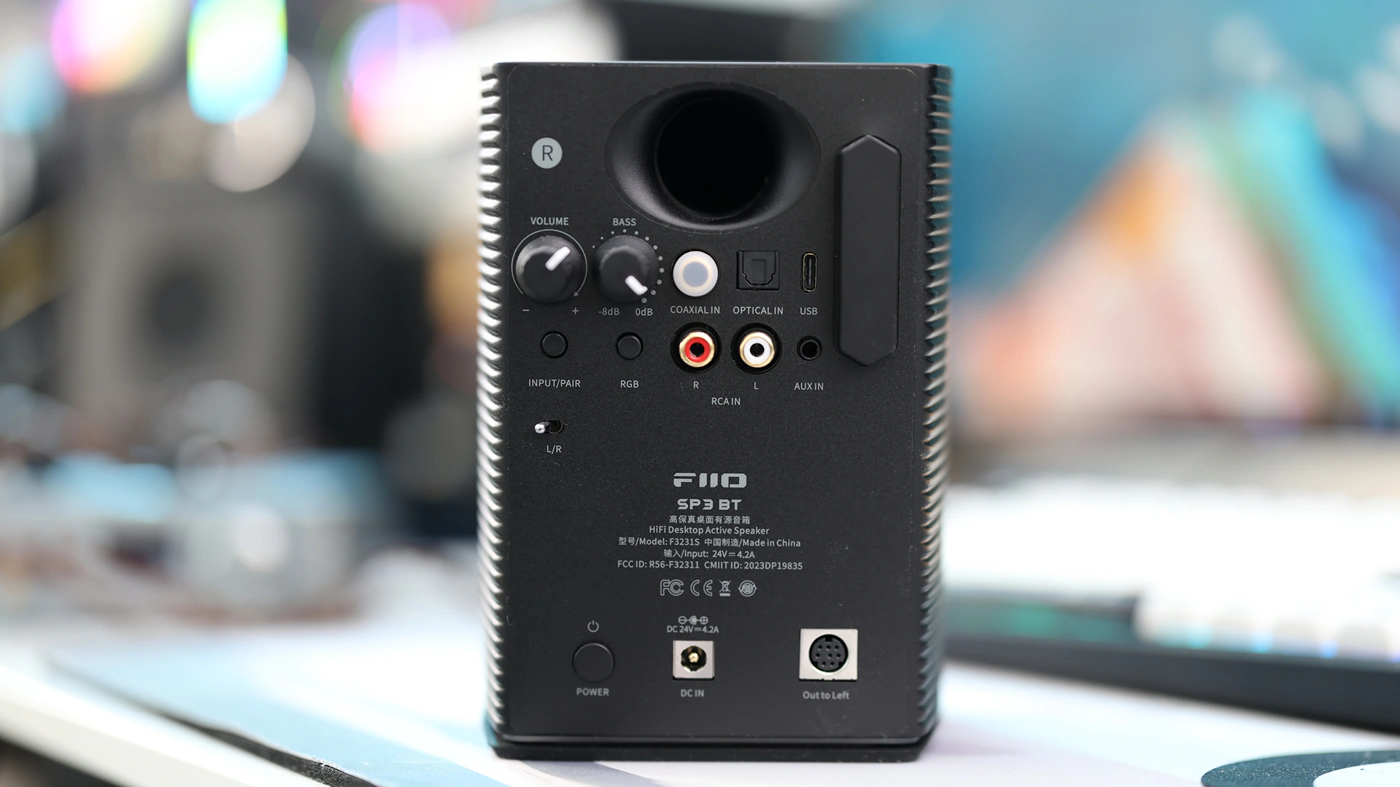
Starting from the low end, the mid woofer is made of carbon fibre, and SP3 is quite a bit smaller than Aurender S5W, which uses a very similar design. To enhance the low-end response, the woofer is extremely rigid but fairly lightweight, and also has a low resonance and vibration level. Each fibre of carbon in the SP3 speakers is 0.007mm thick, or the thickness of a single hair. The tight braiding together of the carbon fibres ensures a wrinkle-free diaphragm and excellent resistance to cracking or damage even for ultra-high volumes and after long periods of usage. The damping rubber is also special, elastic and soft, allowing the driver to move easily and create an impactful but controlled low-end.
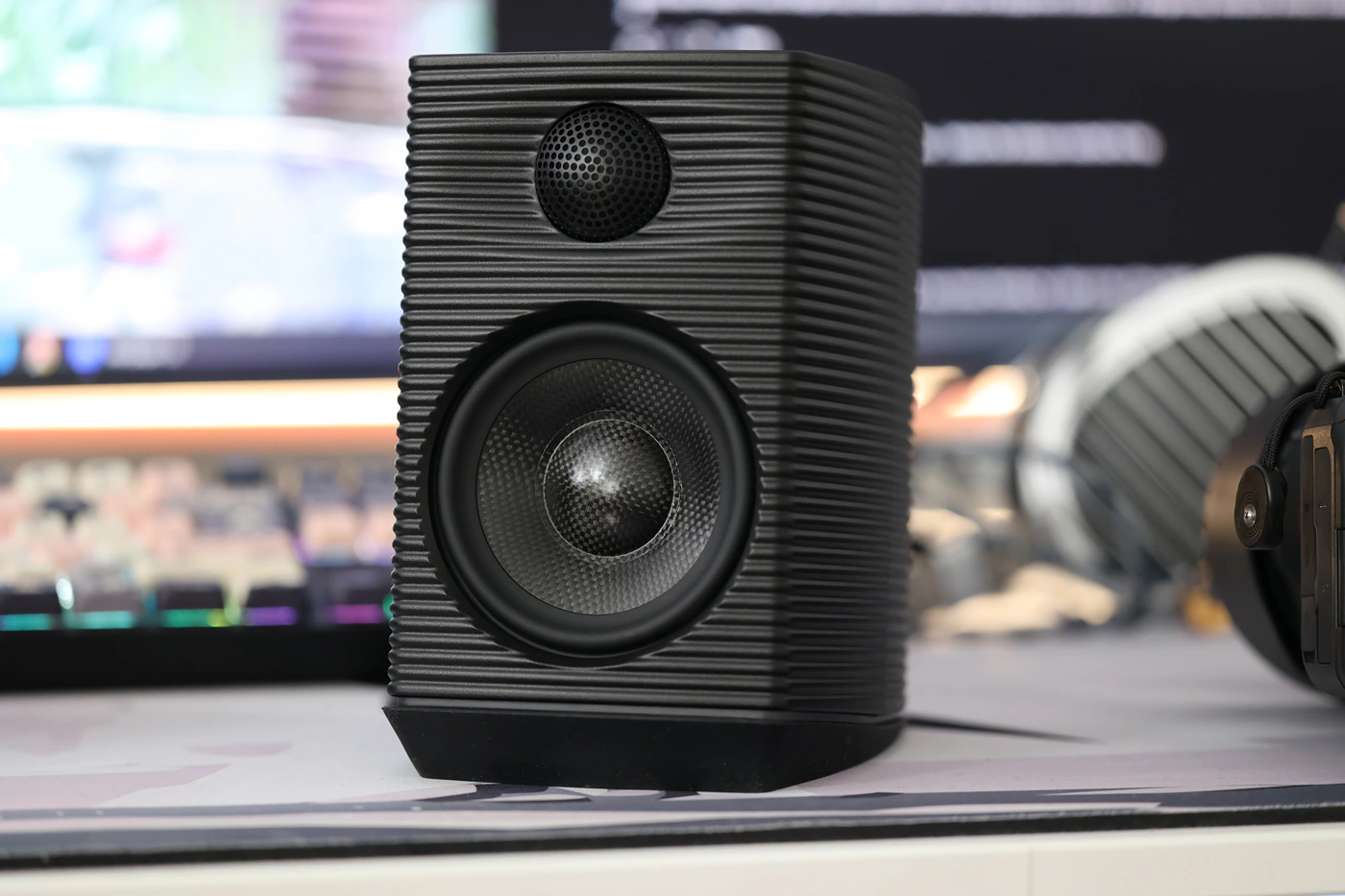
To support the woofer driver, it has asymmetrical internal and external magnetic circuits. There is an auxiliary magnet at the centre of SP3, to form an inner and outer magnet, to enhance the strength of the circuit, allowing for up to 1.2 Tesla of power. This ensures a lower distortion level and high precision, and combined with the Double diffused S-Shaped porting tube, it will ensure the cleanest, deepest bass possible at this size and level.
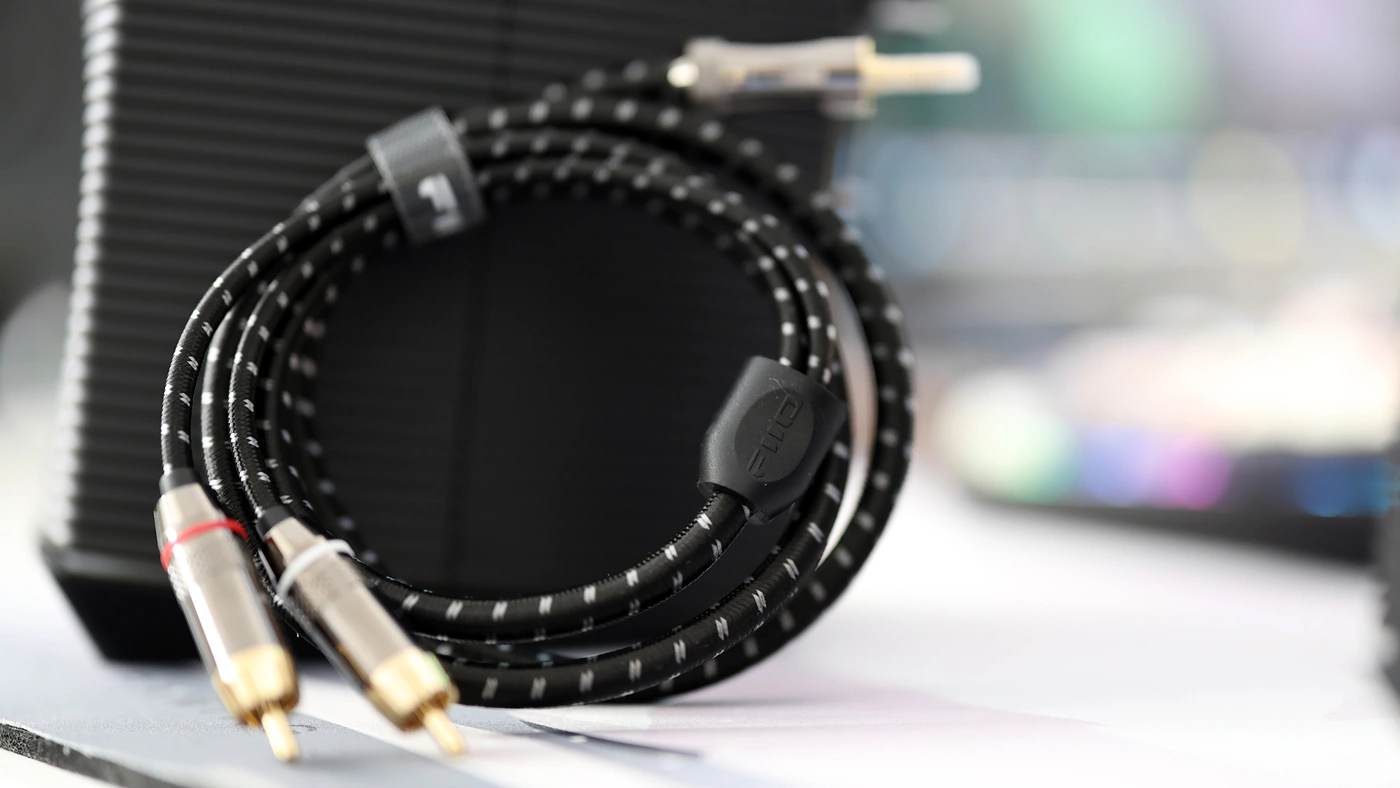
For the midrange and the treble, FiiO uses a 1″ Silk Dome tweeter in their SP3 BT, and this is a bit larger than what most of the competition uses. The tweeter’s KSV copper-clad aluminium voice coil can remain clear of distortion even at extremely high volumes, at frequencies reaching 35 kHz. FiiO went for a natural timber and highly resolving treble, allowing for a more natural texture reproduction, but lower fatigue from the tweeter.
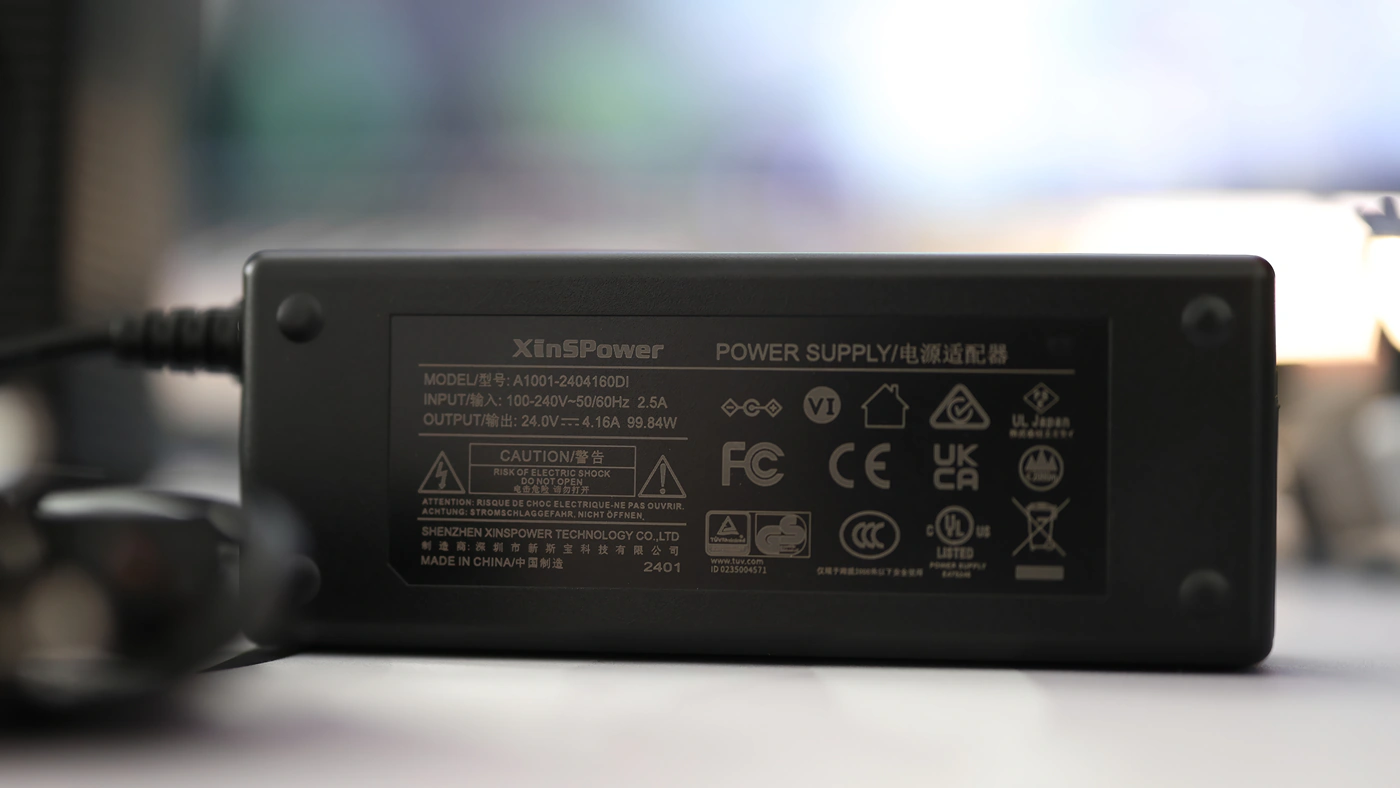
On the amplifier part, we have a 2-Way Active Crossover with a second order design, and a crossover frequency of 3.4 kHz, so the mid woofer takes care of most of the bass and lower midrange, while the tweeter takes care of both the upper midrange and the treble. To actually provide power to the speakers, SP3 uses two Texas Instruments TI 3118 Class D amplifiers, which are highly efficient and which are known for their low noisier floor, and they are divided in a 4-Channel active crossover system, with each driver having its own independent circuit for amplification. The capacitors used are Nichicon capacitors with 4700uf of capacity, and they will ensure a stable power output for the speakers. Although the amplifier has a rather average Class D power provided to the speakers, FiiO notes that they have a high impedance of 8 OHMs and a low SPL of 85 dB, so the amplifier generally does a hard job to provide SP3 BT with the power needed to sound good. This is actually a good thing, as in my experience Class D Amplifiers tend to sound best at medium delivered power, and compressed / dynamically limited at low volumes.
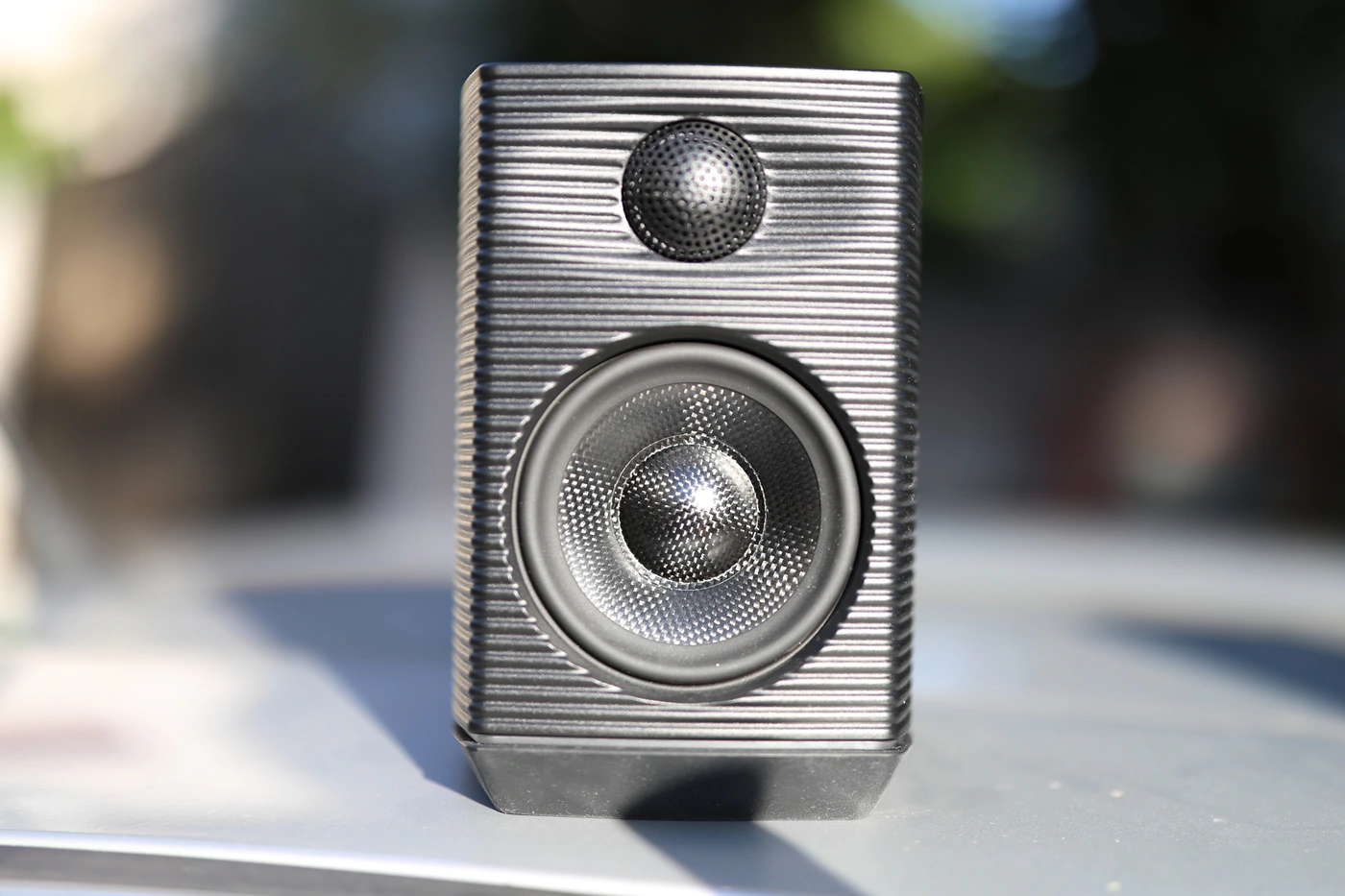
The version we are reviewing is the SP3 BT or Bluetooth, and FiiO added support for the best Bluetooth algorithms, including aptX Adaptive and LDAC, with strong signal quality, and a strong antenna at the back of SP3. The version we have also has a Coaxial input, Type-C USB input, and even USB Type-C input, allowing SP3 BT to work as a USB DAC for my computer. Optical is supported too, as well as both RCA input and AUX input. If you’re using the FiiO app for smartphones, you can use a 10-Band EQualizer, as SP3 BT can be fine tuned to better suit your listening taste and room.
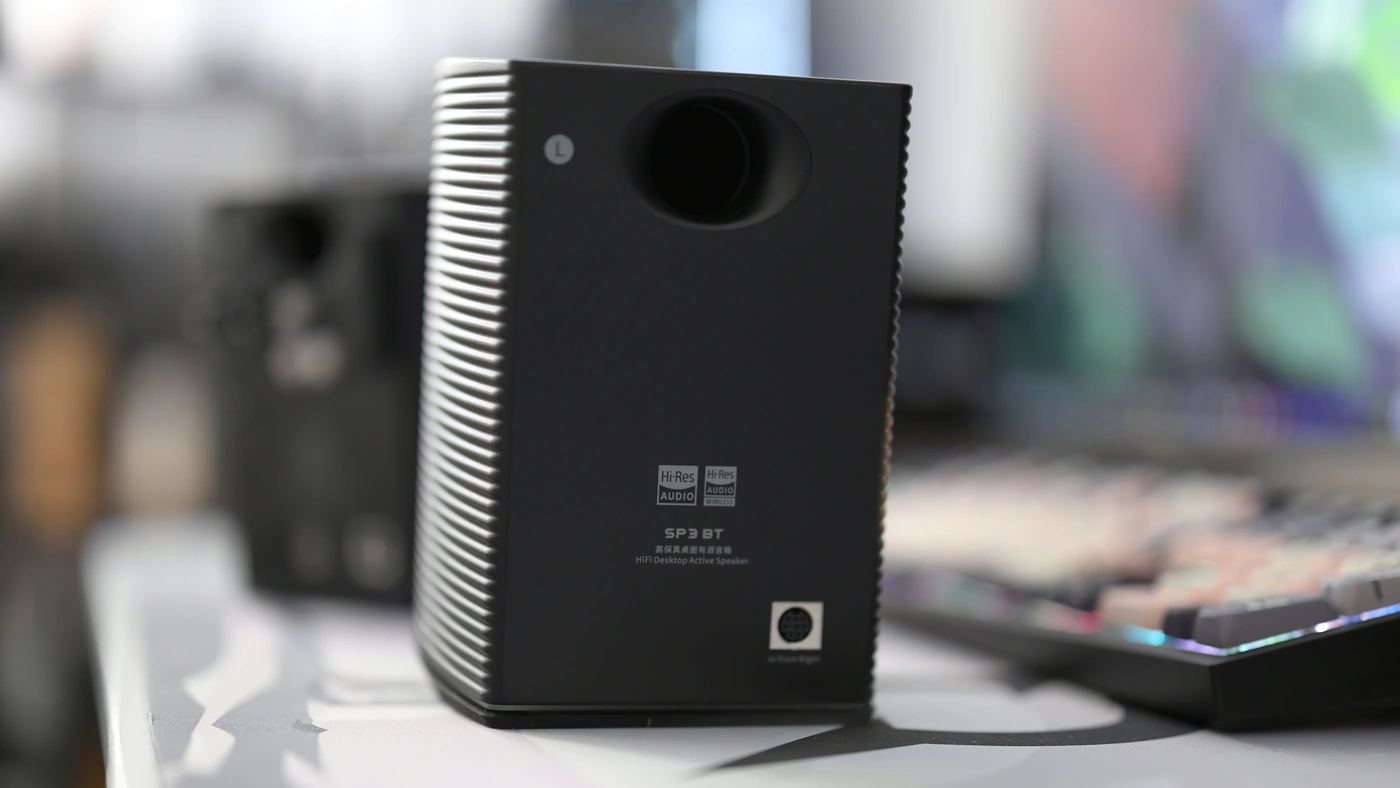
The two speakers are connected with a standard 8-Pin cable between them, and a 3.5mm to RCA cable to connect the speakers to an external DAC. The interesting part here, at least for me, is that the cable between the speakers is fairly long, more than 2 metres, and this allows me to space them enough to get a wide and holographic soundstage. You should be really careful which version of the SP3 you purchase, as there is no USB DAC function for the standard version, and only the SP3 BT version has USB, Optical and Coaxial as well as Bluetooth inputs, while the SP3 simple version only has Line in and RCA inputs, both of which are present on the SP3 BT as well. One little detail I have not spoken too much about is the LED effect at the bottom, and it was not possible to really catch it in action either while taking photos, but both speakers have a synchronised RGB area at the bottom which can have multiple light effects, including breathing and rainbow. This looks fairly cool in person, and it is an effective way to always know where the speakers are at.
Usage / Placement / Power Needs
FiiO ensures that you don’t have to be in the perfect listening position with SP3, and they have basically the same frequency response in an Off-Axis listening position up to 15 degrees, with up to 30 degrees showing very little change in the listening experience. Most of the sound is exactly the same, and in my experience, as long as the speakers are on your desk, and somewhat aimed at you, you won’t notice the difference between listening positions. As SP3 is a nearfield monitor speaker, it will always be somewhere within reach, and I recommend placing the speakers between 50 cm and 2 metres away from you, as the sound will become more vague and less engaging if you place them any further behind.
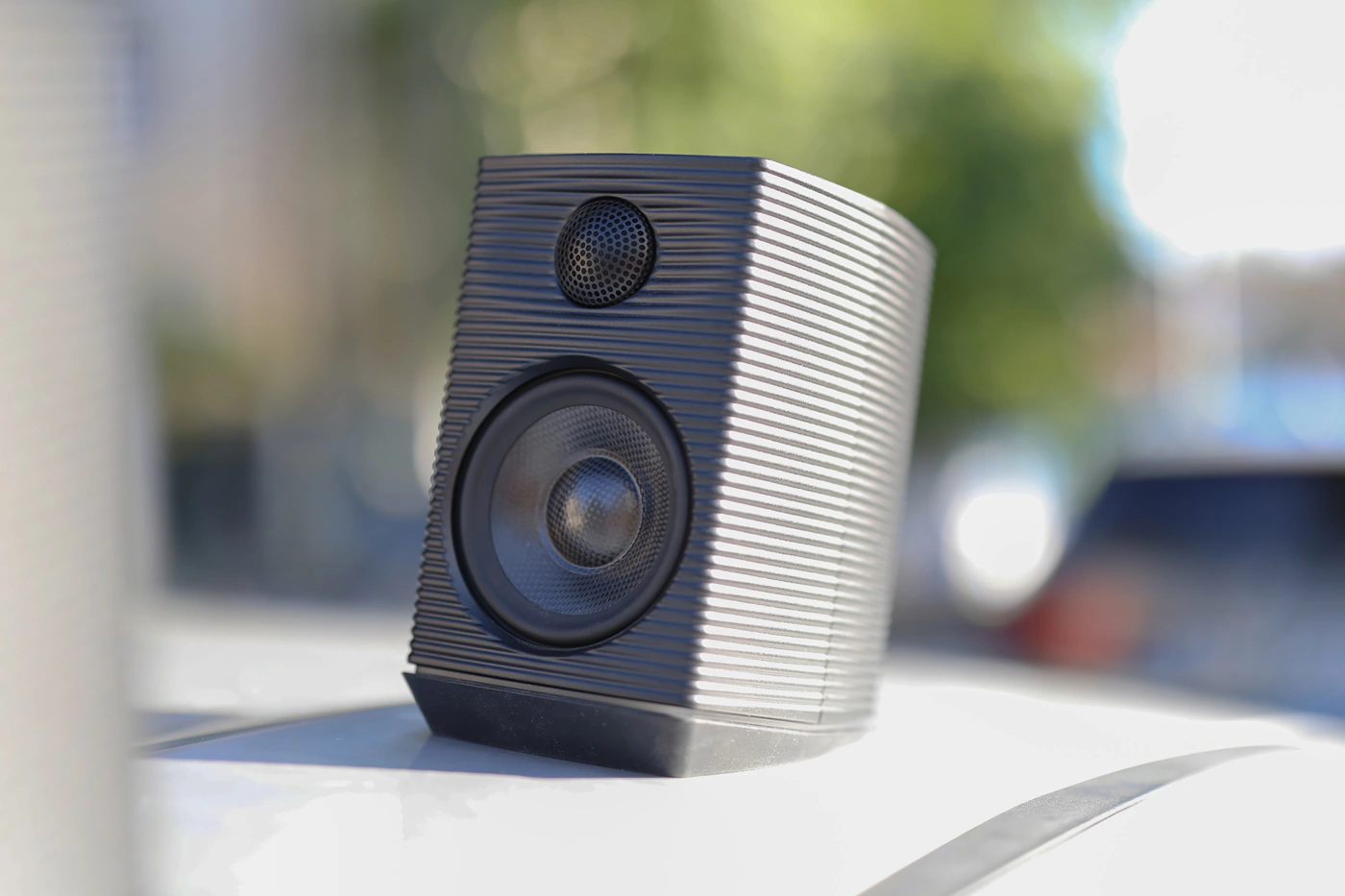
SP3 BT has a Stand-Bay and Auto Wake function, which means that if it receives no signal for 20 minutes, it will enter a sleep mode, and it will wake up as soon as it receives signal. In my experience, this is actually how the function works, with the exception that it seems to auto engage after a few seconds of no audio playing too, allowing them a lower power state for you to not hear any kind of background hissing. If you force them to play a song with zero volume, you can hear a very faint hissing if your eardrum is glued to the tweeter, but it is drowned out by the sound of my own breathing, so I doubt most people will be bothered by the background noise.
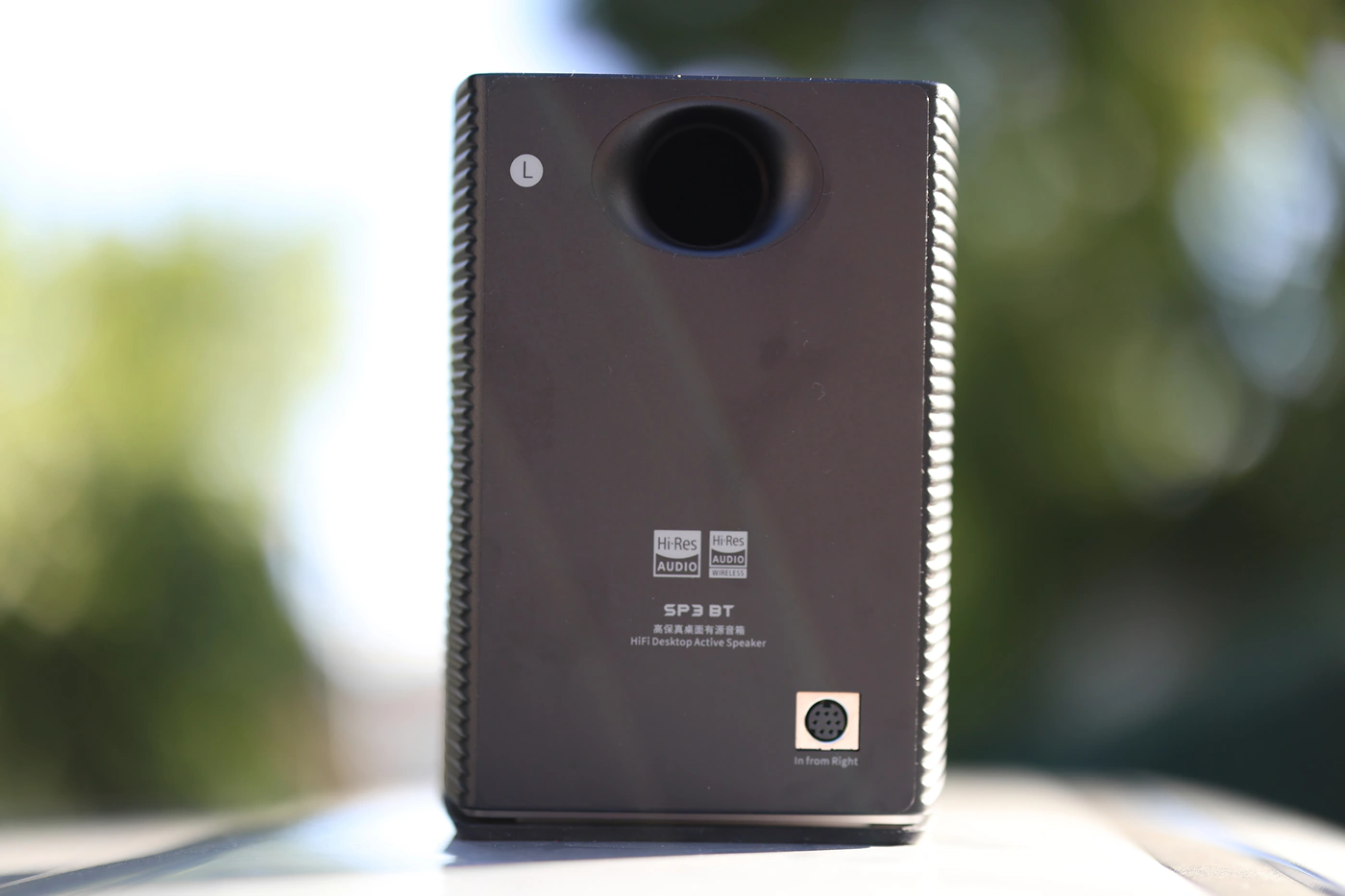
As FiiO SP3 will most likely be placed on your desk while you’re listening to them, there are two sets of rubber desk pads included in the package, with the best one having an angling of 7 degrees, and which gets both the bass and the treble to reach your ear at the ideal time. This pad also acts as a shock absorber and will not allow your desk to resonate from the sound of the speaker, cancelling the little resonance that would be transmissible from the speaker from the desk. As the aluminium casing doesn’t allow for much vibration to pass through them anyways, you should be free from unwanted resonance and distortion either way.

Although FiiO doesn’t brag much about it, I found the fact that the tweeters are protected with a hard cage to be really helpful, as the speakers are always within hand reach, and if you bumped a bit harder into the tweeters, you could risk killing them. All in all, in my experience, the 15 degrees of vertical and horizontal dispersion is respected fairly well, 30 degrees is still ok, but above 30 degrees, you will hear the treble and upper midrange changing quickly. It is important to also have the speakers set as far away from each other as possible, in your laterals if you want to get the widest soundstage possible, but they should be as close to each one of your ears as possible, to get a better resolution and detail. Basically, if you could place them to your sides, but close to you, then you’ll get a great sound.
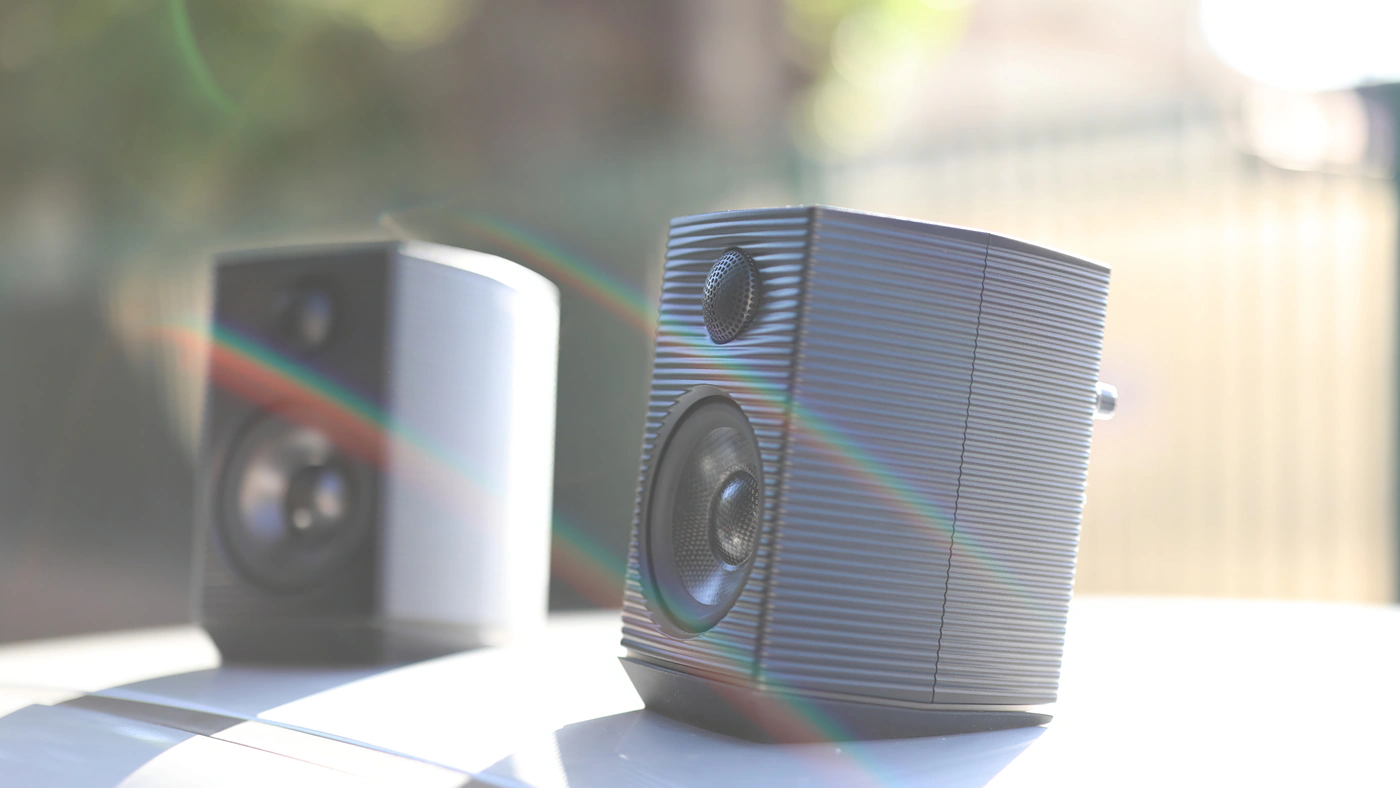
Using SP3 BT with the digital inputs results in no USB DAC delay, and SP3 BT is fit for watching real time content, movies, playing action games, or enjoying real time content in general. The volume can be used entirely with no increase in background noise when using very high volumes, although it is good to keep that given the size of the drivers and design of the speakers, they won’t be able to hold a party, and are best listened to below 115 dB. There is no gain to be had even if using a high-end DAC, and I feel you’re happiest using SP3 BT with the Type-C Input, Bluetooth input, or any of the digital inputs.
Sound Quality
Overall Signature – All the three main inputs of the SP3 BT sound really close to each other, so you can expect to get a similar sound when using them via the Bluetooth input, Type-C USB Input, Optical / Coaxial, or the Line Input. The most different of the three is the Line input, as there you are using an external DAC, but the overall sonic quality is very similar, and enjoyable out of all the inputs, with none feeling like a downgrade compared to the others. The biggest difference is that the digital inputs will go to sleep faster, while the line input will stay awake for longer.
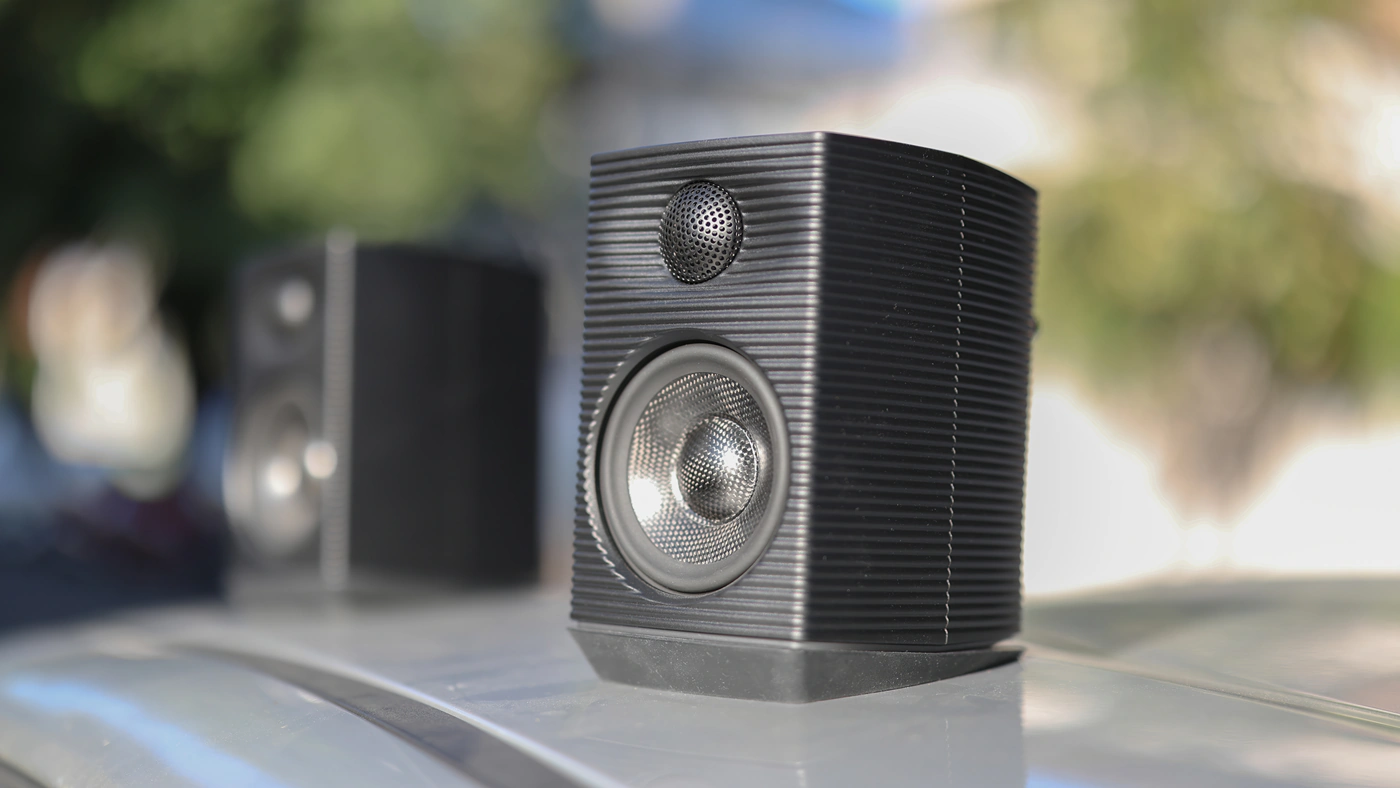
We have a natural, clean and detailed sound with a strong stereo imaging and instrument separation, a rich presentation for each instrument, although even with the bass metre turned at maximum, the bass will still roll off as seen in FiiO’s own graphs, with most of the bass energy being available for listening above about 70 Hz, with a sharper roll-off below it. At 40 Hz, the bass falls with 35 dB compared to the midrange and the treble, so most energy and punch is in the 70 Hz – 90 Hz range. The midrange is rich, smooth and full sounding, warm and forward, creating a very punchy and natural presentation. The treble is smooth, clean and on the slightly soft side, although the tuning can be bright when you turn the speakers loud, as the energy and power of the tweeter can overpower the woofer driver, especially above 105 dB. I find myself listening to and enjoying rap, EDM and pop the most with SP3 Bt, as for metal the bass rolls off a bit early, but music that is mixed and mastered for Radio sounds brilliant, clean and has exceptional separation / resolution.
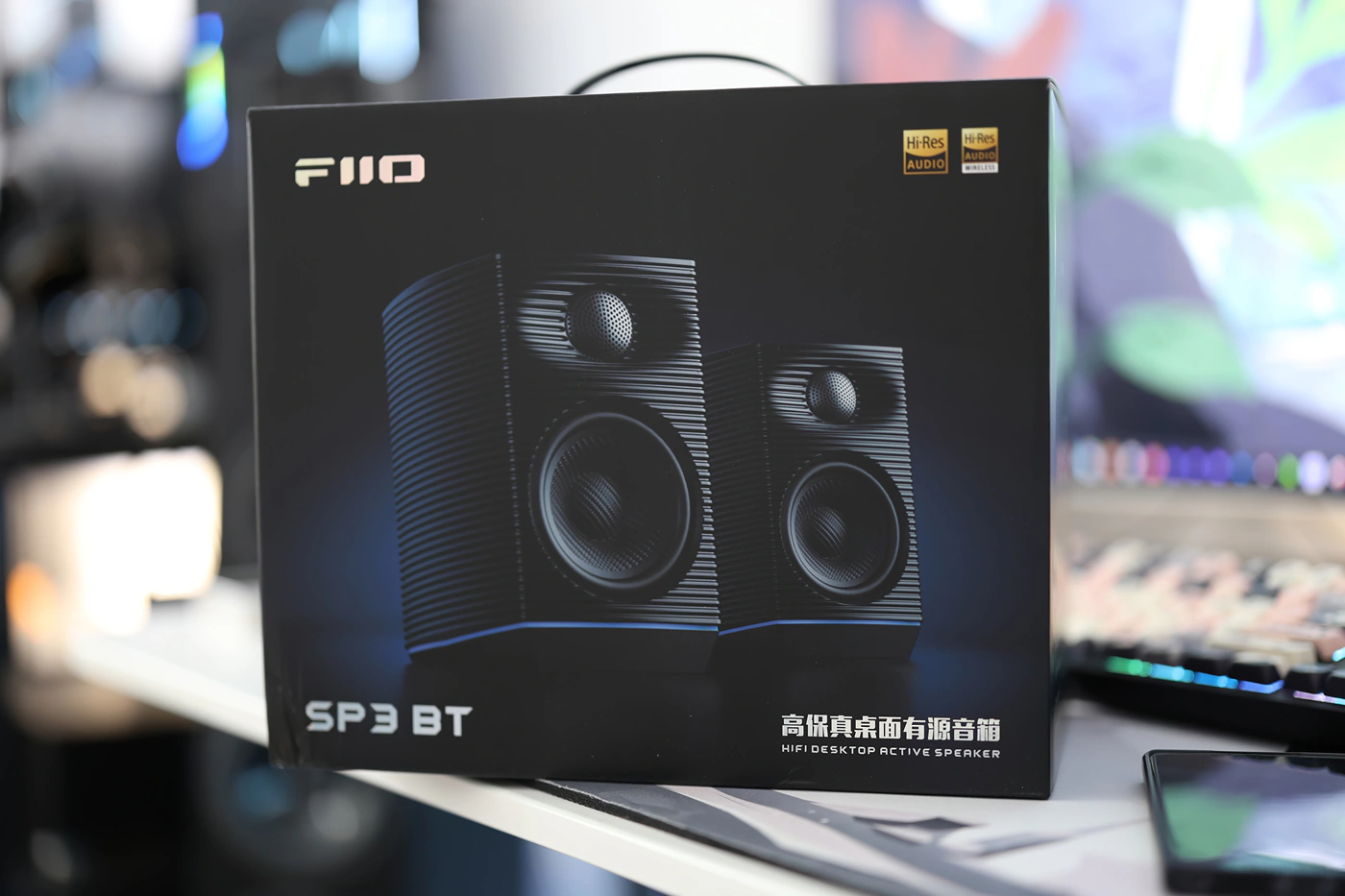
Bass – Starting with the bottom end, we start at 70 Hz, where most of the bass energy can be found. Bass is lush, full, somewhat slow and smooth in presentation, creating the kind of sound that never bothers, doesn’t have any kind of fatiguing elements, but has a good amount of bloom and impact. As you will hear a bit of extra oomph and lushness in the midrange, SP3 BT is quite good at handling pop music, as well as EDM, Rap and slower sounding music. The sound is better the more relaxed and laid back the song is, as SP3 BT has a tendency of bringing music in your face quickly, giving it boldness and energy, so aggressive music can feel over-the-top, while relaxed music sounds vivid, realistic and atmospheric. I enjoy songs like those from Fever The Ghost a lot. With bands like Electric Six, the impact is really strong, and you hear the drums in your face, SP3 BT being excellent at creating a lively and forward feeling. Especially on my wooden desk I can feel the bass rattling my clothes and chest when listening loud, although it is a bass above 70 Hz, as limited by the size of the driver.
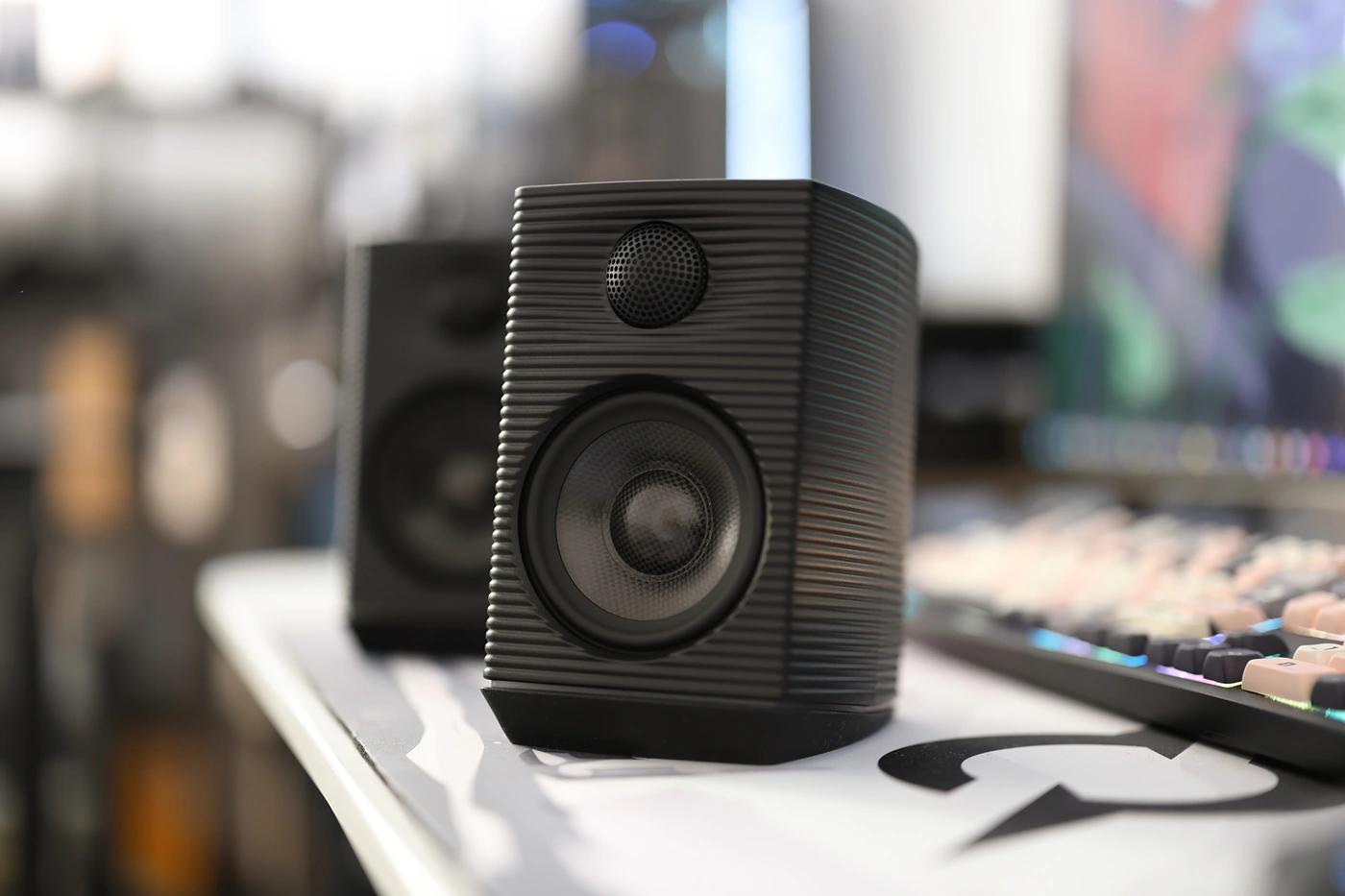
Midrange – I left in some Electric six, and I noticed one of the richest and most beautiful guitar presentations I’ve ever heard with SP3 BT, as this is a speaker that can truly render guitar energy rich and lush, with a punchy feeling to riffs. Male voices are as emphasised as are female voices, and all music sounds forward and colourful, vivid and dynamic. Both electric and acoustic guitars have the same amount of energy and impact, and I tend to favour slower and smoother music, but everything works well with SP3 BT. Even songs from Billy Eyelash sound sweet, full and lush, with SP3 BT spreading the instruments wide and well separated, offering a clean presentation for synths and an edgy texture for square waves. There’s a slight tendency to make songs more emotional, and brighter than true neutrality, but this works well with most music, except for death metal, where the sound can be a bit too aggressive and fatiguing. Voices in rap are well defined and lyrics are easy to understand, with each spoken word being presented in your face, and clean. Many details appear with SP3 BT which are not evident or not present at all with any other speakers, but this is because SP3 BT has a forward midrange, and will show certain synths, special effects and sounds in your face, direct and punchy.
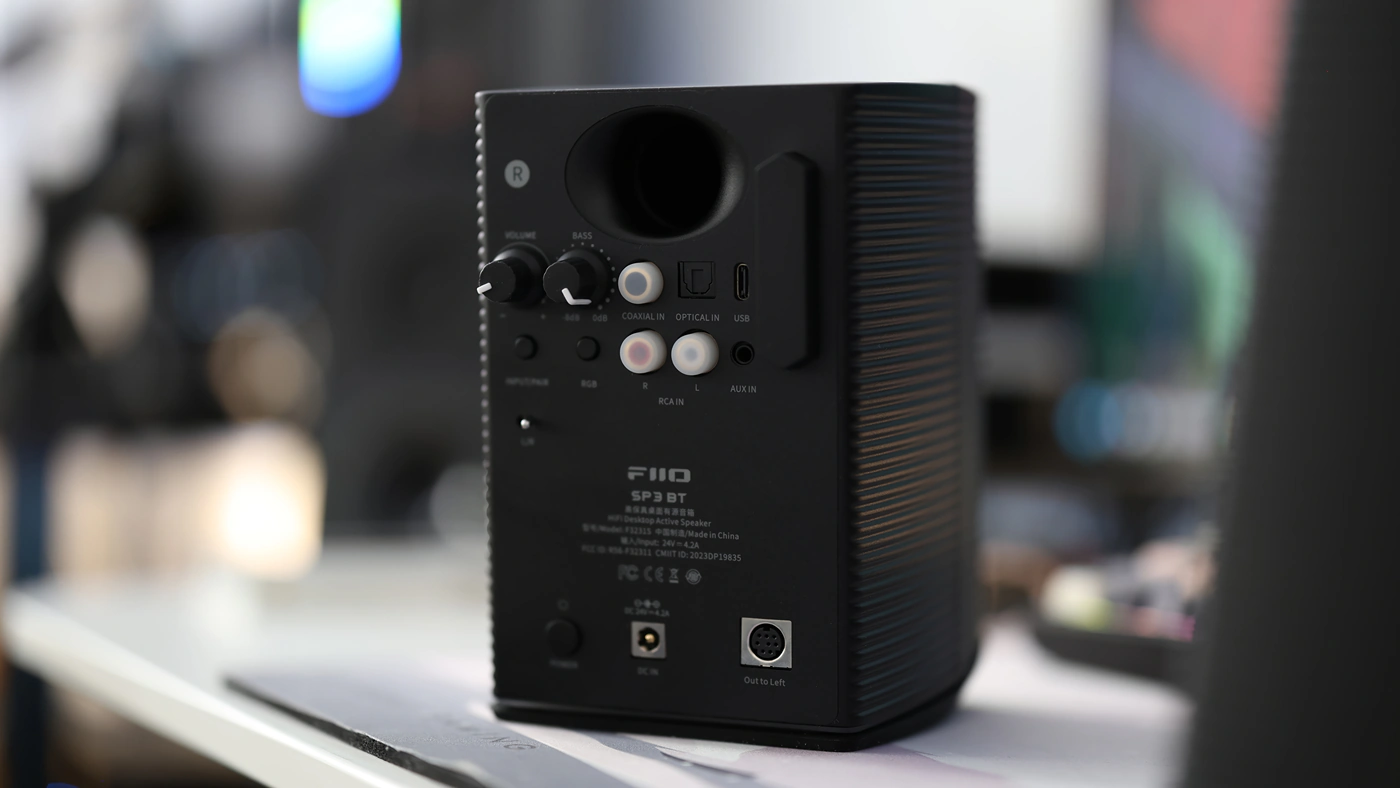
Treble – We have a bit of extra variation with the treble, as we see a stronger, brighter treble at louder volumes, where the tweeter can overtake the woofer a bit, but at medium and low volumes the treble is smooth, lean and rich, presenting a strong detail and contrast for all music, and creating a wide and holographic stereo imaging. With higher volumes, the treble gets more textured, edgier and has more impact / higher degree of energy. The treble is never in your face, or the closest element to the listener, that spot being safely kept for the lead voices and the drums, which are always in your face. Synths and background voices can be spread far away from the listener, and although those are just two speakers, they can convey sounds that come from your back, creating a really strong imaging. Treble extension is excellent, and I can hear zero roll-off, with no specific peaks or dips, although there is slightly more upper midrange energy, which makes the sound a bit brighter than it is lush and dark.
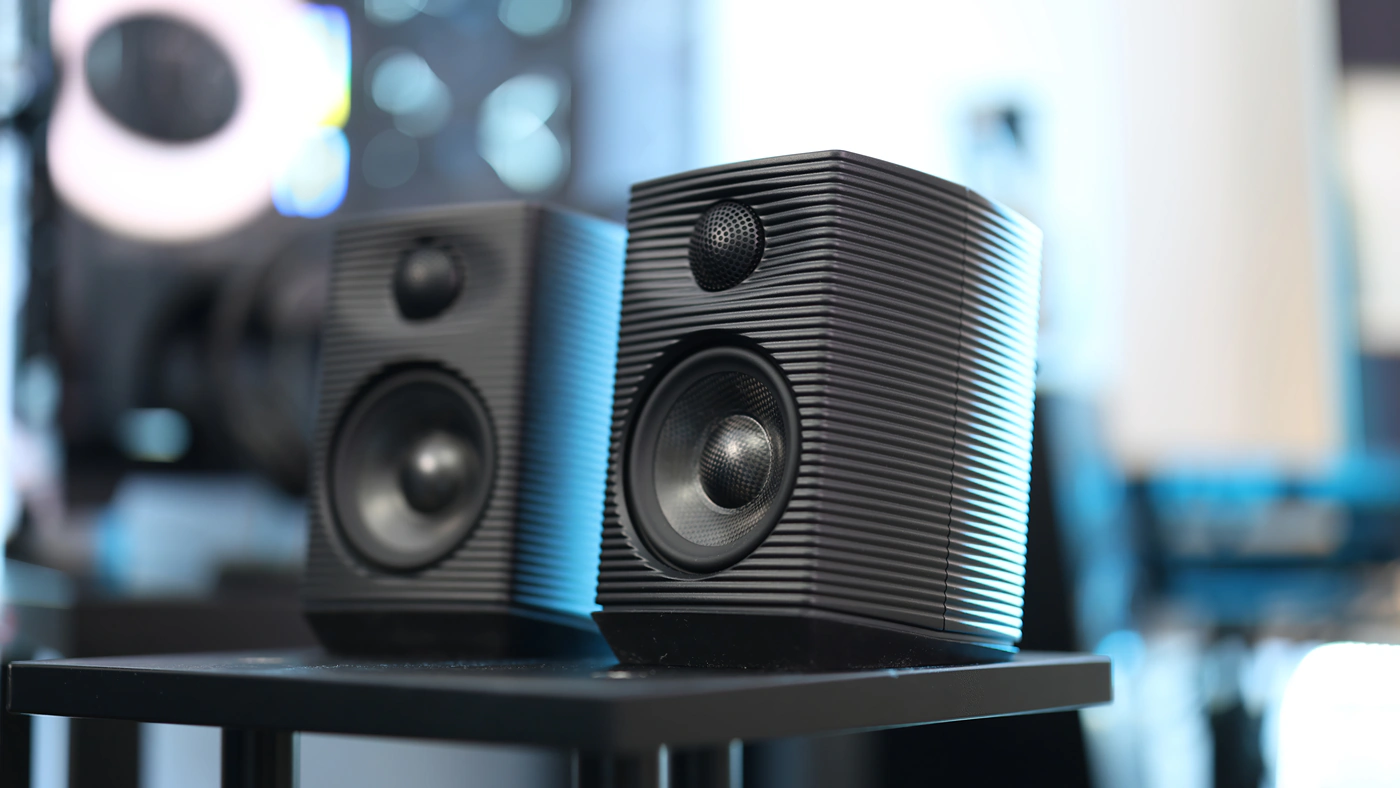
Dynamics / PRaT / Textures – A big secret to creating a pleasing tuning is having the right amount of texture and impact in the right place, and SP3 BT nails this well, having a stronger texture in the upper midrange, where the tweeter enters the scene, and a smoother, lusher and fuller texture in the lower midrange and the bass. This means you can expect an edgy square wave in the highs, where there’s quite a bit of energy and crunch in the treble and upper midrange, than there is in the bass. Guitars, especially for bands like ZZ Top sound vivid, and realistic, with a strong texture, pleasing tuning and a musical / full presentation.

Volume Control – You can expect a fair volume control, and some changes with volume with SP3 BT, both because they have a mini size, and because the Class D amplifiers inside can show more volume with the tweeter more easily, and most medium and large sized rooms will sound brighter with music playing at a higher volume. In a smaller room, the sound is extremely forward and punchy, with a stronger bass, while in a larger room, there is more treble and less bass. At maximum volume the THD grows, and the most controlled sound can be achieved up to around 100 dB, above which the higher THD becomes noticeable. At extreme volumes, the sound can feel like it has a lot of gain, and SP3 BT, despite their size can push up to 115 dB, but I would avoid going so loud, for the sake of the drivers and for keeping SP3 BT in best health. The powered speaker can get a bit warm at loud volumes, but nothing concerning, as even if left at almost max volume for long periods of time, it gets mildly warm and not hot.
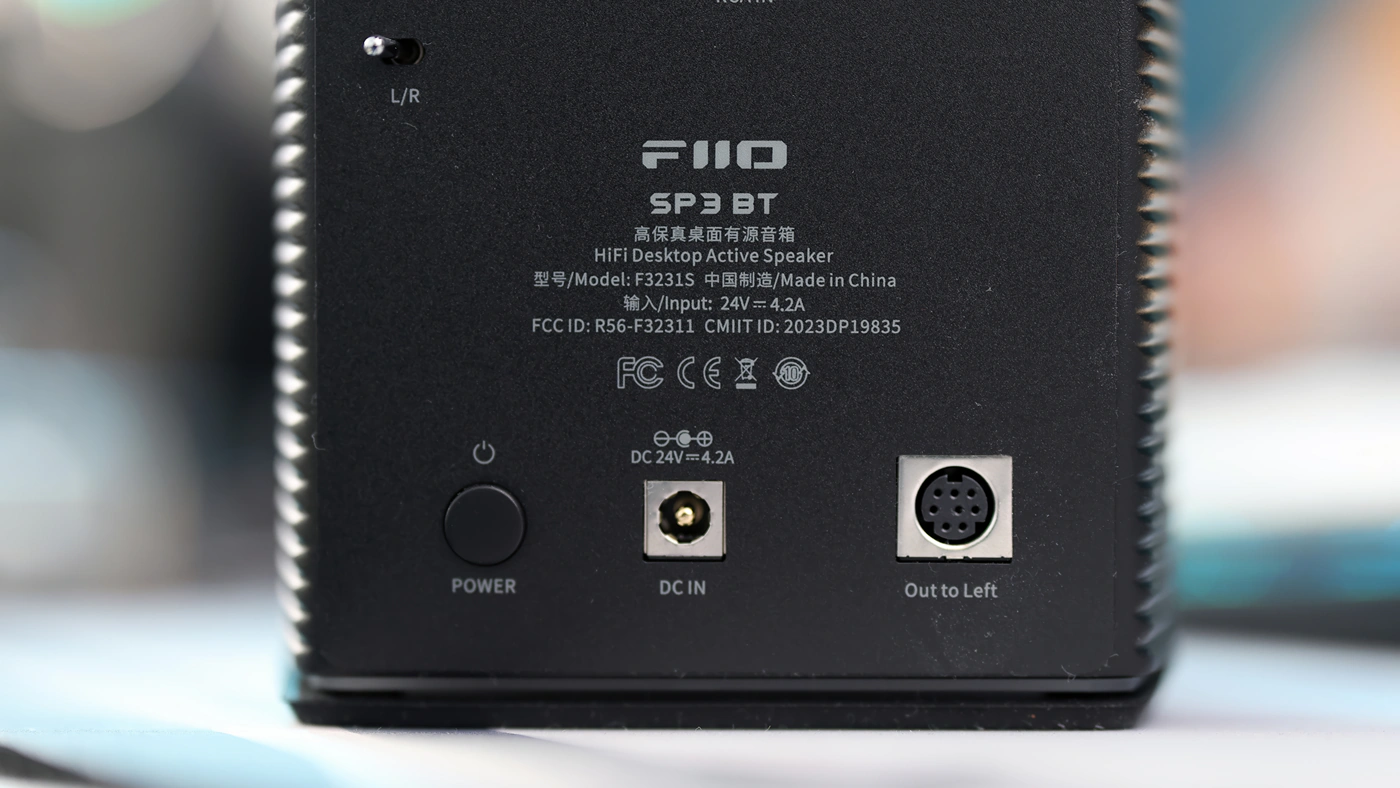
Soundstage – If you like sound to be wide, you can place SP3 BT very far away from each other, to your laterals, and this will create the widest image, with the best separation. It is possible to get a really strong imaging and stereo separation, although the soundstage is wider than it is deep, and especially with the bass rolling off below 70 Hz, there is less depth. This being said, SP3 BT can achieve distance between you and the playing instrument really well, and will separate strongly between the foreground and the background instrument layer. SP3 BT makes me appreciate and enjoy bands like Imagine Dragons and Mars Bruno a lot, having just the right smoothness, lushness and imaging to make their songs enjoyable and vivid.
Gaming
SP3 BT will surely make its way into the setup of some gamers, as this is a speaker with a comfortable, edgy design, and can easily be placed on your desk. For gamers, you will be happy to learn that it is compatible with most consoles and gaming PCs, and there is no USB DAC delay on any of the inputs. This means you will be able to hear sound as you see the image in real time, and even with super fast shooters, the speakers will be your aid and won’t hold you back.
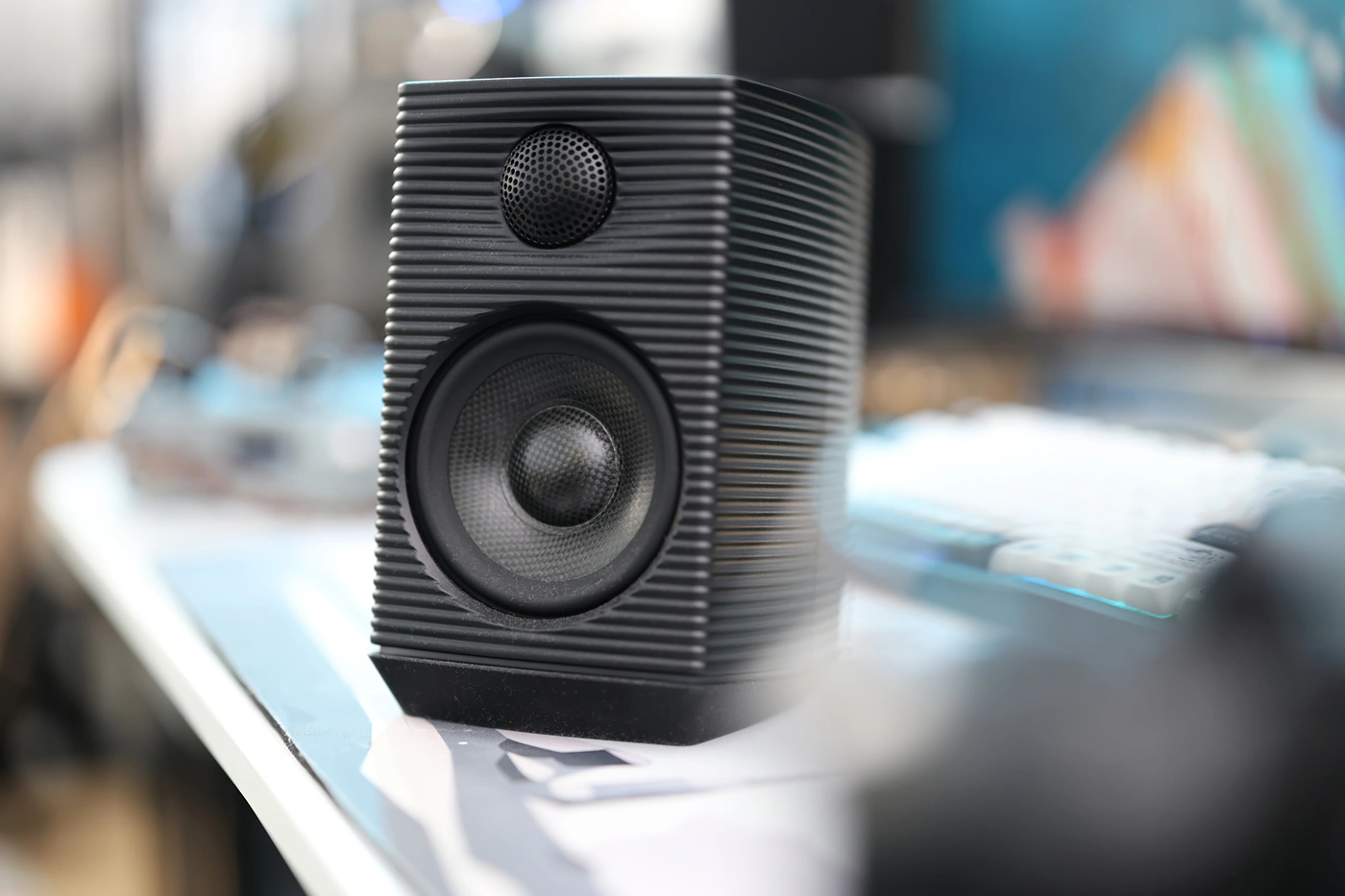
The wide and holographic soundstage will help you, creating a good imaging, allowing you to hear where a threat is coming from in shooters and competitive games, while the wide stage and strong imaging will help set the mood for atmospheric games and Visual Novels. Female voices are sweet, while guitars are colourful, both of which work well for my selection of VNs and strategy games, as well as soundtracks of games like Genshin Impact or Honkai Star Rail.
Comparisons
FiiO SP3 BT vs Aurender S5W (349 USD vs 3000 USD)
Build – Both speakers are made of metal and very solid, although there is no wire connecting the speakers for s5W. This being said, to connect S5W to anything, smartphone or PC, you need the USB transmitter, while SP3 BT has a type-c input, Optical, coaxial, and even RCA input, allowing you to use them easily with most gaming consoles and setups. There is more volume control with sP3 Bt, and lower distortion at high volumes, with less of a USB DAC delay, and SP3 BT has a slightly lower noise floor and hissing while the speaker is in stand-by mode. You cannot add ba subwoofer to S5W, but you can add one to SP3 BT, to fill in the sub-bass reproduction, while s5W has a wider dispersion, and a wider angle you can sit relatie to them for a good sound, SP3 Bt being rather directional in comparison, both vertically and horizontally.
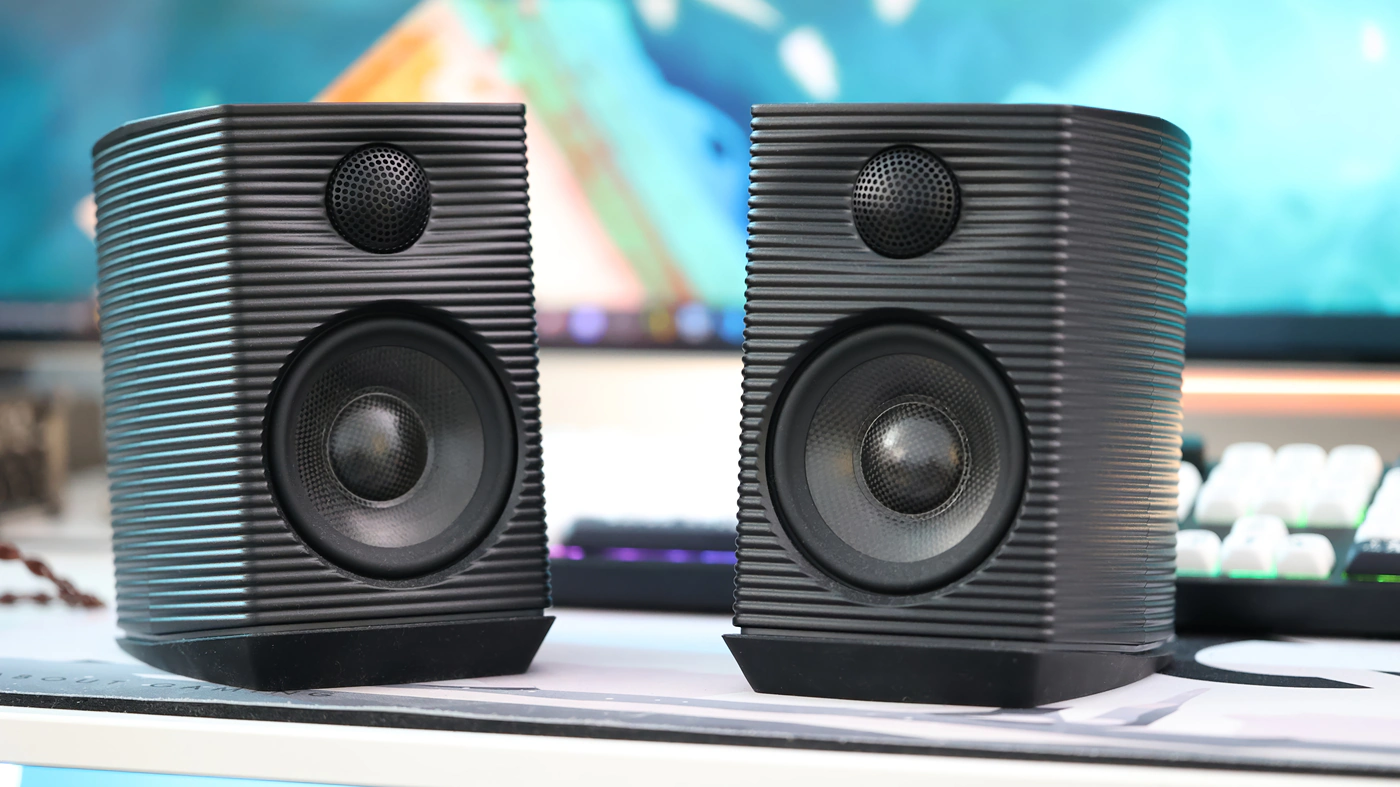
Sound – Sonically, S5W is sharper, more metallic, and extracts more detail from music, but has the same roll-off as SP3 BT at around 70 Hz, the bass response being comparable. The trick here is that SP3 BT has a bass adjustment control which allows you to give them a rather full and lush sound, they can be very pleasing to the ear, and more musical in the midrange, although SP3 BT creates a more forward sound with more lateral separation and more spatiality on the horizontal plane. For sweet music with female leads, SP3 BT sounds more vivid and colourful, while for rock and metal, S5W gets the guitar crunch a bit better. While both speakers are good options for a minimalistic setup, SP3 BT is just 11.6% of the price of S5W, so it is far easier to recommend speakers for anyone wanting a minimalistic setup.
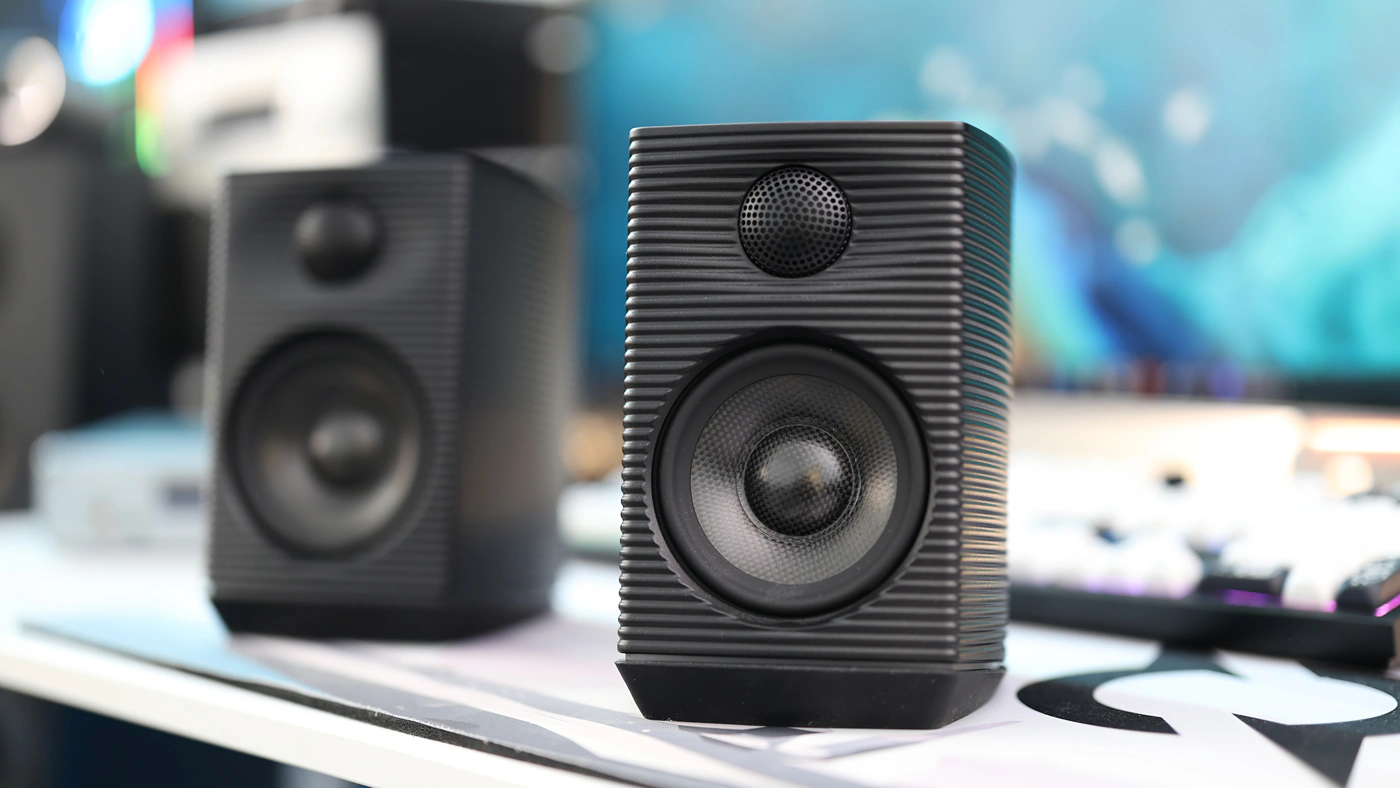
FiiO SP3 BT vs SVS Prime Wireless PRO (349 USD vs 899 USD)
Build – You will notice that SVS Prime Wireless PRO has a larger design, much larger, and they cannot be placed on my desk without hindering my sight of my monitor. This being said, Prime Wireless PRO has a beautiful design too, and they also have Wireless support, with strong and bold looks, and that beautiful piano finish, as well as a punchy and dynamic sound. There is more bass extension with Prime Wireless PRO, and the lateral dispersion, as well as vertical dispersion is stronger, and you can sit less centred relative to them for a good sound. Even with all this being said, most of the impact with Prime Wireless PRO is also above 65 Hz, and they also would need a subwoofer for the best sound, and you can add a subwoofer to both SP3 BT and Prime Wireless PRO with a bit of extra thought for the setup.
Sound – Sonically, SVS Prime Wireless PRO sounds detailed, clean and punchy, colourful and pleasing, while SP3 BT follows a fairly similar tuning, but Prime Wireless PRO has stronger bass and more extension, with more low-end impact. SP3 BT can make certain details, especially in the upper midrange, more obvious, and sounds richer with guitars and square waves for synths, while SVS Prime Wireless PRO sounds deeper, and creates more depth to sound, and has better layering. Both speakers have a similar degree of instrument separation, and SP3 BT can be more aggressive, but more dynamic too, brighter and sharper in the treble, with better accuracy for cymbals as well as other instruments. You can get away with using SVS Prime Wireless PRO without a subwoofer even long-term, while SP3 BT has a more noticeable low-end rolloff, but a more colourful midrange and treble. SP3 Bt has better connectivity, all the inputs sound more similar to each other, and with a much lower price point it is much easier to recommend.
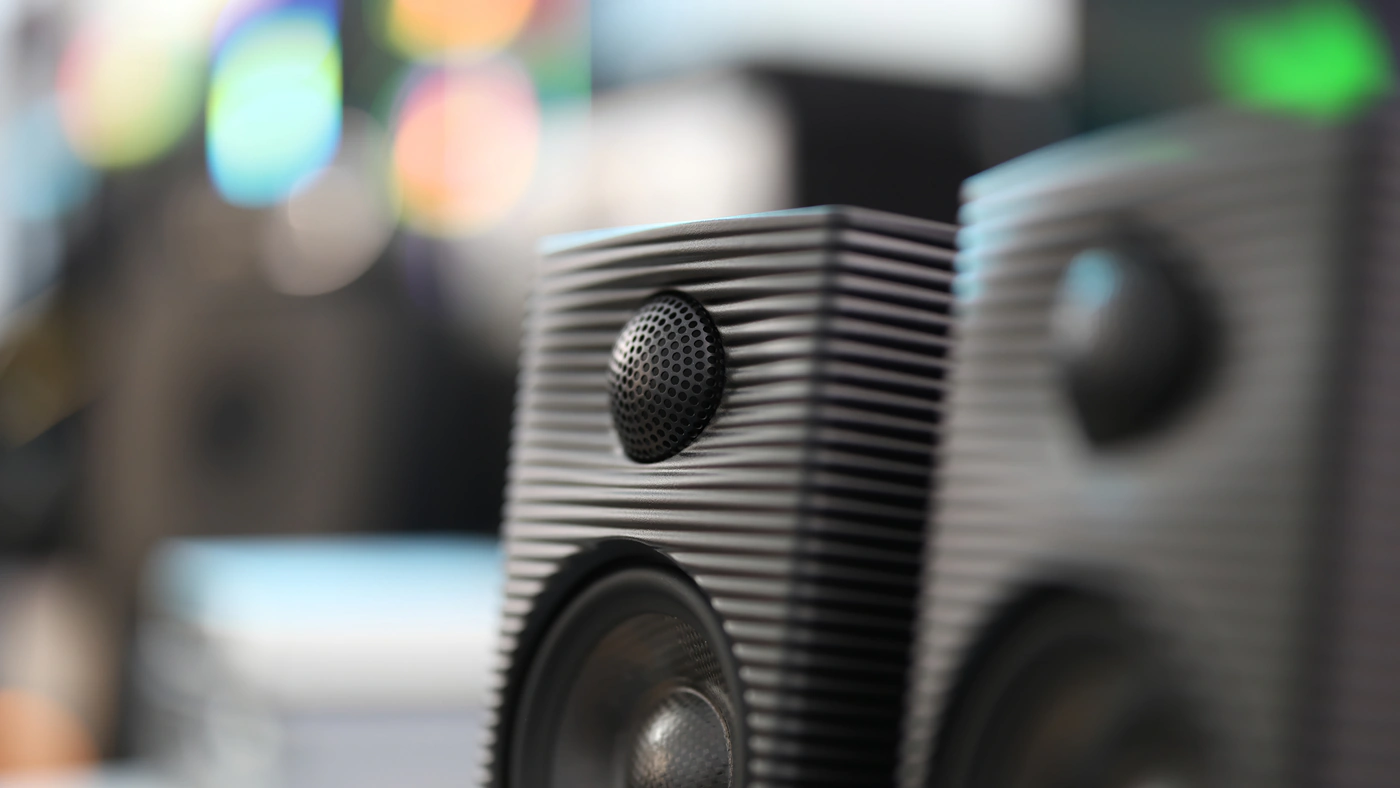
FiiO SP3 BT vs Tronsmart Bang Max (349 USD vs 229 USD)
Build – Bang Max is a bluetooth speaker, close enough in pricing to SP3 BT to be mentioned, well made and with an IPX rating, and a speaker I am often using while doing chores around the house, as it provides a boomy, pleasing sound and a good filling factor for any room. With Bang Max, you mainly want to use the Bluetooth input, with all the other inputs not being worth the effort, and it has more distortion at higher volumes, but also lower resolution and quality at lower volumes. This being said, bang Max has more bass, although not much more bass extension, as it also rolls off around 55 Hz – 60 Hz. While both speakers are great for some music, SP3 BT is much better for gaming, multimedia usage, and has a much better soundstage.
Sound – Sonically, Bang Max can actually be loud enough for a party, while SP3 BT is not quite enough to make a whole room dance. The overall presentation has a boomy, bloomy and dark sound with Bang Max, while it is balanced, natural and flat with SP3 BT, bringing forward the midrange and especially the upper midrange, giving sound a punchy and colourful presentation.
Value and Conclusion
FiiO always sets out to offer a strong price / performance ratio, and SP3 BT is no exception, offering a listening experience almost as good as Aurender s5W, but for about a tenth of the price. While not a speaker for a party, SP3 BT can totally achieve fun and enjoyment for anyone using them in a nearfield listening fashion.

At the end of the day, if you have a desk and want to bring excellent sound and music to your work or gaming environment, if you want to hear a punchy, dynamic sound with strong details and good stereo imaging, plus a high maximum loudness, and musical bass, lush and smooth, and a bright, airy and sharp treble, with FiiO SP3 BT is one of the headphones that’s easiest to connect to a computer, smartphone, console or DAC, and which will get you the best tuning and signature for the price paid.
Product Link
You can grab one here – https://amzn.to/46D7xvC
--- Please remember to stay safe, and always have fun while listening to music!---
- If you have a dime to spare, please donate, and help us! It would make the day brighter for me and my wife-
Full Playlist used for this review
We listened to more songs than those named in this playlist, but those are excellent for identifying a sonic signature. I recommend trying most of the songs from this playlist, especially if you’re searching for new music! The playlists are different for Spotify, Tidal and Youtube, and based on the songs I enjoy and are available on each!
https://www.youtube.com/playlist?list=PL_cjBXGmwSHSdGcwuc_bKbBDGHL4QvYBu
https://open.spotify.com/playlist/5J3oloz8Riy9LxEGenOjQ0?si=979ba4f082414be7
https://tidal.com/browse/playlist/330fd544-8e5b-4839-bd35-676b2edbb3d5
--- Contact Us ---





